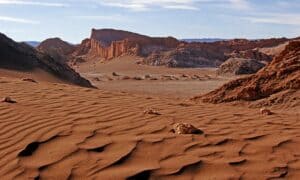While Nevada isn’t the most dangerous state for wild animal attacks, it certainly isn’t the safest either. It’s home to some pretty unique animals and landscapes, such as rattlesnakes that hide under rocks in the scorching desert. You certainly have to be tough to live in this beautiful Southwest state. If the 100-degree temperatures aren’t bad enough, you also have to look out for deadly snakes and bugs. Discover the seven most dangerous animals in Nevada’s deserts, including their effects on humans and where you might find them lurking.
About Nevada’s Deserts
Nevada features two major desert ecosystems: the Mojave and Great Basin Deserts. The Great Basin Desert is the largest in the country and spans across most of Nevada. It is a temperate desert that features hot, dry summers and cold, snowy winters. And the Mojave Desert is in Southern Nevada in the Las Vegas area. This desert is the smallest and driest in the country.
1. Western Diamondback Rattlesnake
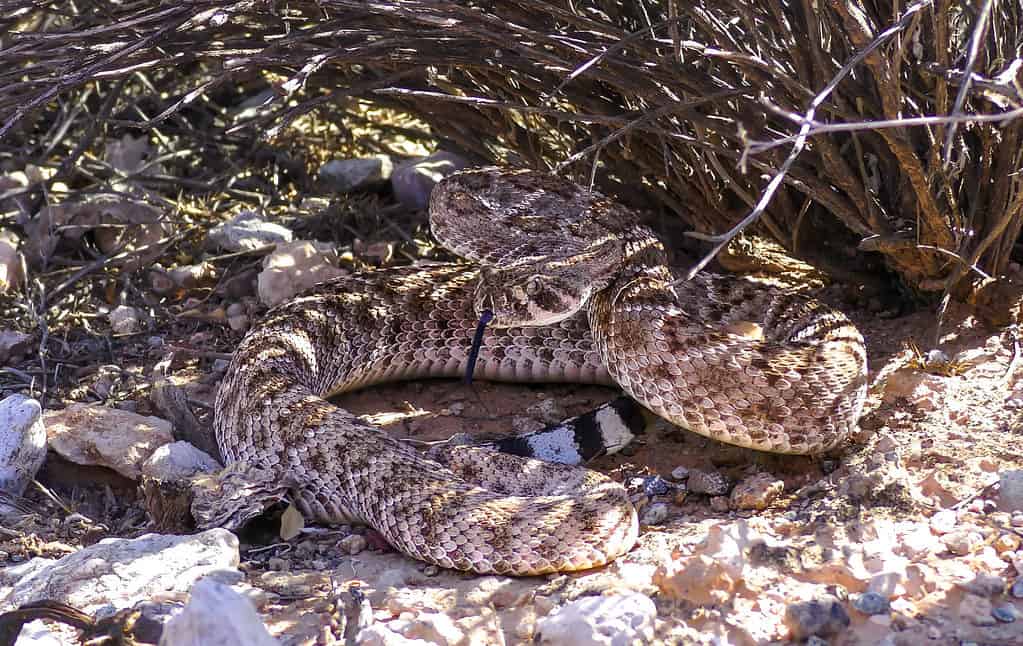
Western diamondback rattlesnakes are one of the most lethal in the country.
©iStock.com/Banu R
The western diamondback is a venomous pit viper found in the Southwestern United States. This rattlesnake species is one of the most common in the country and also one of the most lethal. It ranks second for the most human fatalities in America, trailing the eastern diamondback.
Western diamondbacks are the largest rattlesnakes in Nevada, where they live in the southern tip of the state. This snake lives in diverse habitats, including deserts, plains, forests, and rocky hills. And you can find them hiding under vegetation or other cover. While this species is easily excitable, bites are still rare. And death resulting from western diamondback bites is even rarer.
2. Gila Monster
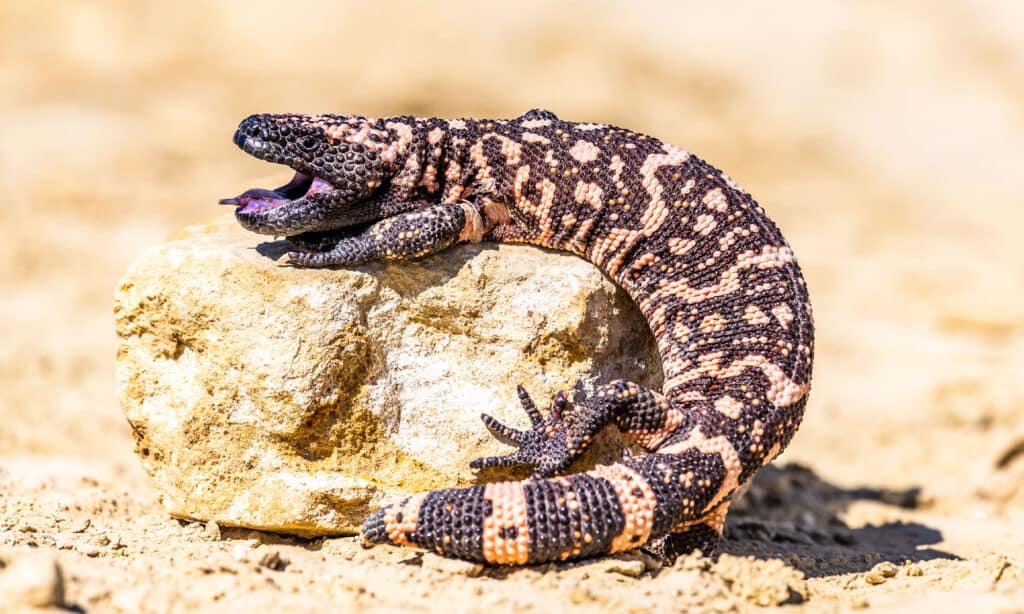
Gila monsters are the only venomous lizard in the U.S.
©Vaclav Sebek/Shutterstock.com
The Gila monster is the only venomous lizard in the United States. They live in the deserts of the Southwest, including the Mojave Desert in Nevada. They primarily live in underground burrows, so it’s pretty rare to see one running around. Gila monsters contain venom as potent as a western diamondback, but they don’t inject as much when biting. Symptoms from a Gila monster bite include weakness, intense burning pain, swelling, vomiting, and rapid heart rate. Death is very unlikely.
3. Kissing Bug
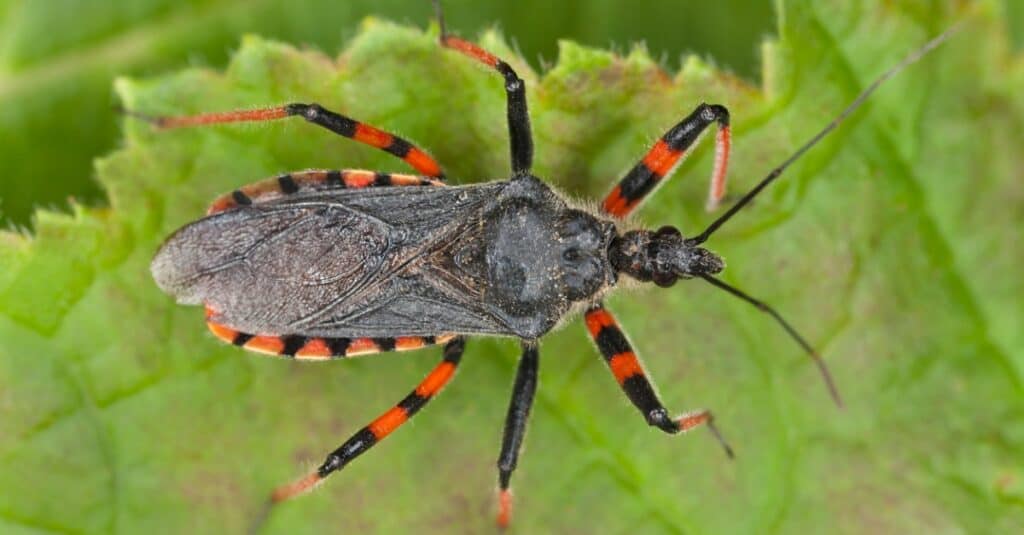
The kissing bug can be blamed for Chagas disease.
©Henrik Larsson/Shutterstock.com
Common in the American Southwest, kissing bugs are small wingless insects that have a propensity for biting people near the mouth, hence the name. These bugs can carry a parasite that causes Chagas disease, affecting the heart and digestive system if left untreated. Kissing bugs are not common Nevada, but you can still occasionally find them in the desert or near habitations.
4. Mojave Rattlesnake
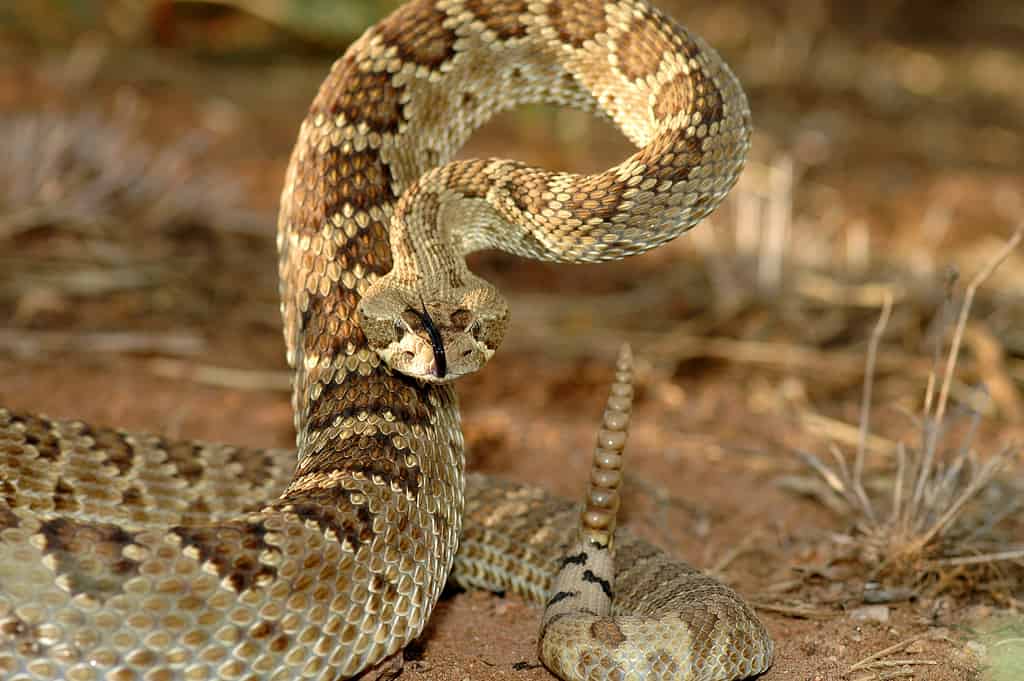
An adult Mojave rattlesnake is one of the most dangerous animals in Nevada’s deserts.
©Shoemcfly/iStock via Getty Images
The Mojave rattlesnake is the most venomous snake found in Nevada deserts, with a 30 to 40% fatality rate in bites that go untreated. Thankfully, nearly half of Mojave rattlesnake bites are dry, meaning no venom was injected. These highly venomous snakes live in semi-desert grasslands and scrublands in Southern Nevada. Be on the lookout for this species around low vegetation, like desert scrub.
5. Bark Scorpion
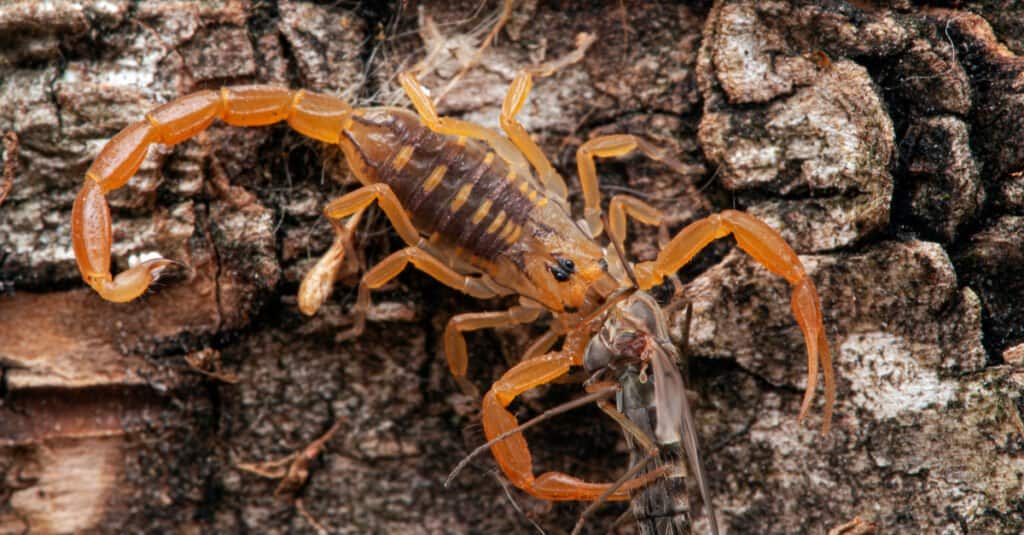
Bark
scorpion
s can make their way inside Nevada homes.
©Ernie Cooper/Shutterstock.com
The bark scorpion is another dangerous animal in Nevada’s deserts, most often found in Southern Nevada. These scorpions are the most venomous scorpions on the continent. While their stings are painful, they are rarely life-threatening. Older adults and young children are the most at risk for serious complications. You can find bark scorpions hiding under rocks, crevices, trees, walls, or even inside dwellings.
6. Great Basin Rattlesnake
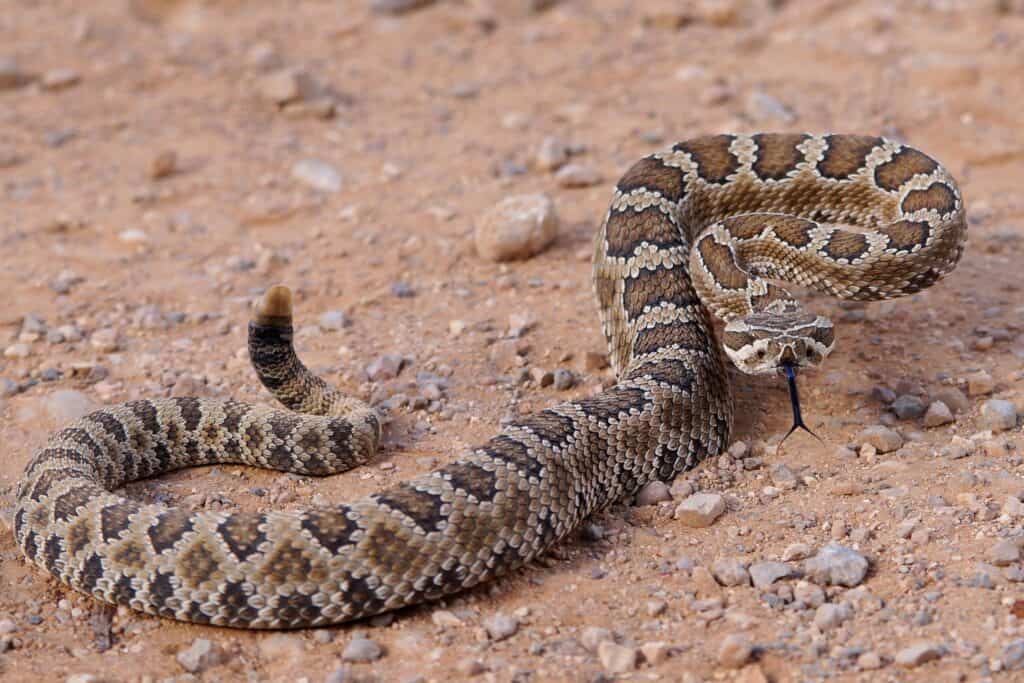
Great Basin rattlesnakes aren’t that large, and they blend into the surroundings extremely well.
©Matt Jeppson/Shutterstock.com
While most of the animals on this list reside in the Mojave Desert, the Great Basin rattlesnake is the only venomous reptile throughout most of the Great Basin Desert. They prefer barren and dry areas, where you can find them on hills, curled up near rocks, valley floors, and alfalfa fields. While these pit vipers can be dangerous like any other rattlesnake, fatalities are extremely rare.
7. Sidewinder
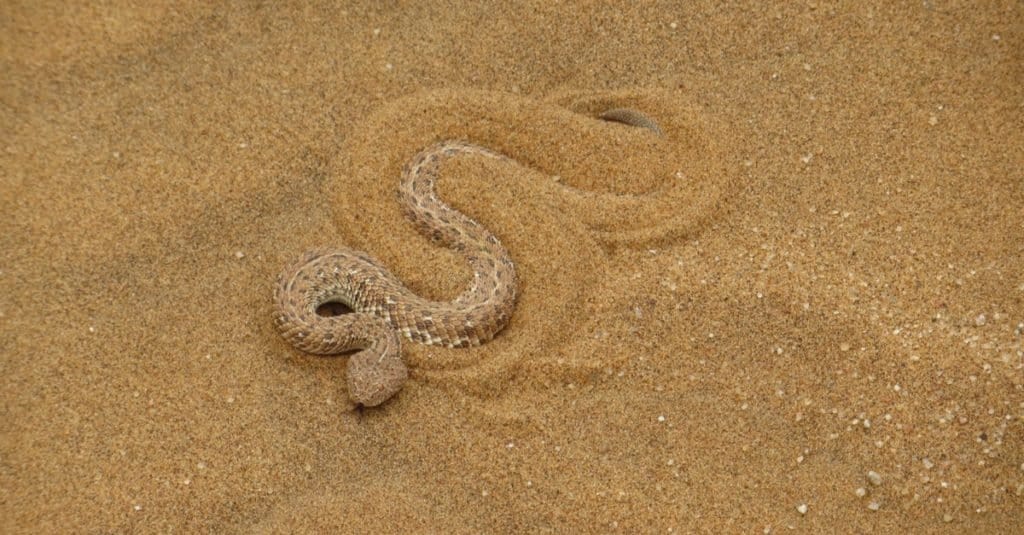
Sidewinders get their name from their unique form of side-stepping locomotion.
©Roger de Montfort/Shutterstock.com
The sidewinder rattlesnake is another venomous pit viper found in Nevada deserts. It’s named for its sideways gait that helps it move quickly across the sand. You will find this species in the Mojave Desert, where it likes to blend with its environment and partially bury itself in the sand. While their bites are dangerous, their venom is weaker than other rattlesnakes. However, all rattlesnake bites should be taken seriously.
The Most Dangerous Animals in Nevada’s Deserts: A Recap of the Top 7
| Number | Dangerous Animals in Nevada’s Deserts |
|---|---|
| #1 | Western diamondback rattlesnake |
| #2 | Gila Monster |
| #3 | Kissing bug |
| #4 | Mojave rattlesnake |
| #5 | Bark scorpion |
| #6 | Great Basin rattlesnake |
| #7 | Sidewinder |
The photo featured at the top of this post is © iStock.com/johnaudrey
Thank you for reading! Have some feedback for us? Contact the AZ Animals editorial team.




